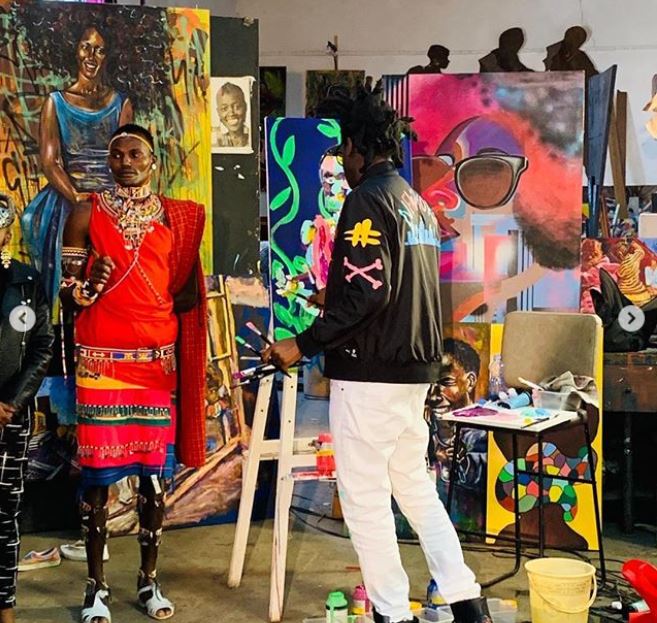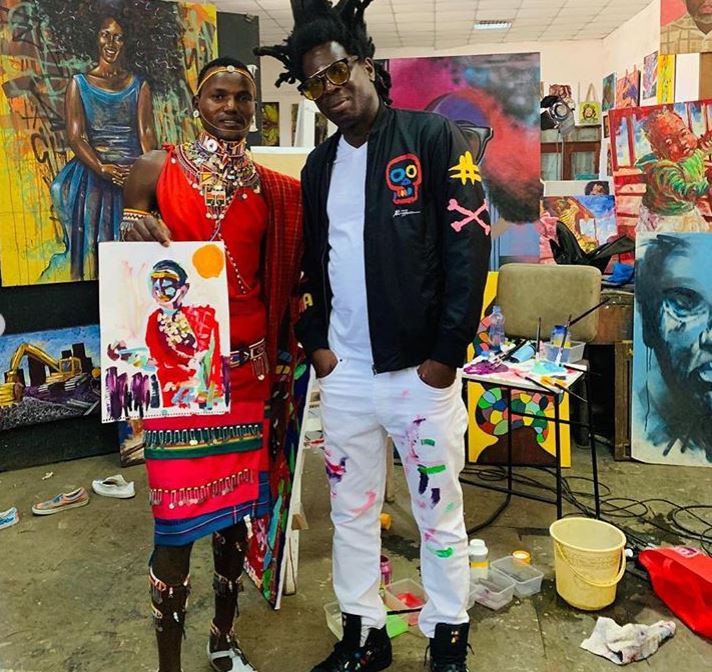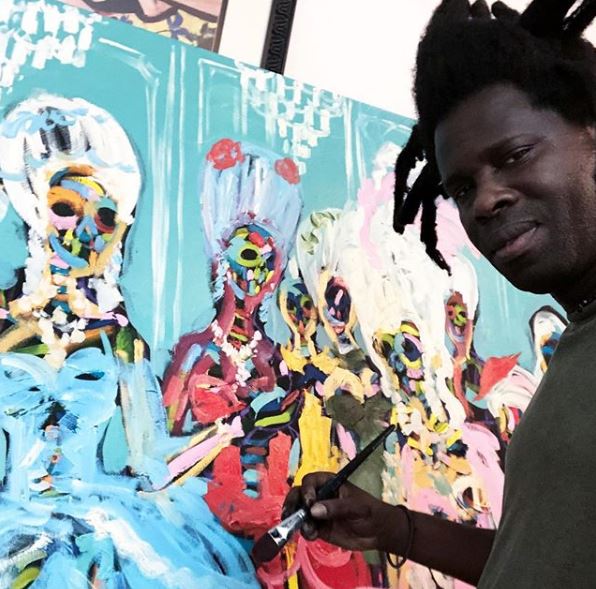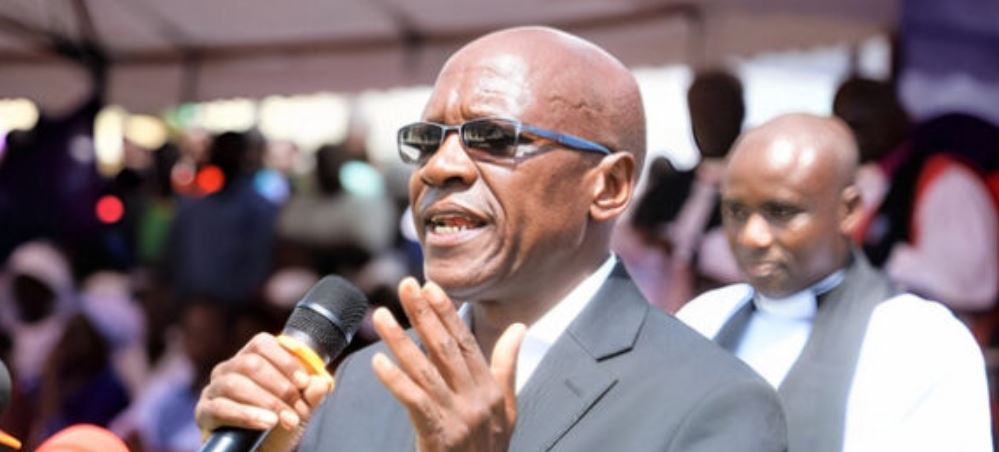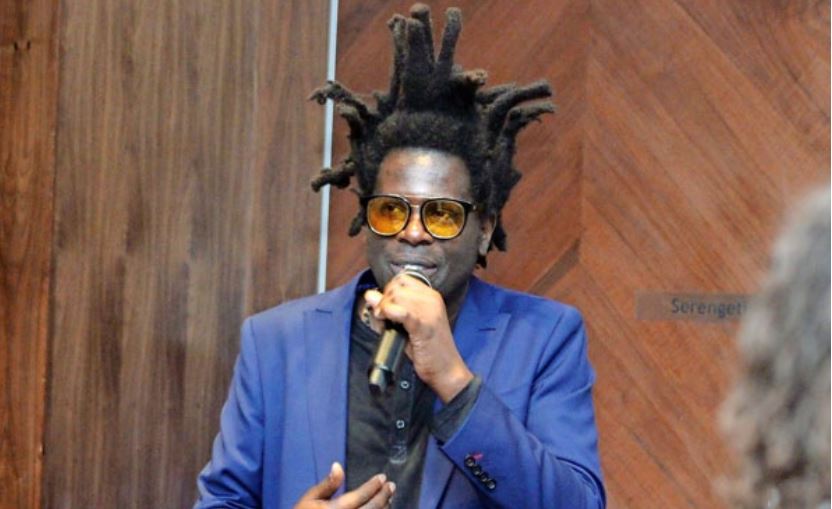 Bradley Theodore is a NewYork based artist who was in Kenya recently as part of his 2019 worldwide tour.
Bradley Theodore is a NewYork based artist who was in Kenya recently as part of his 2019 worldwide tour.
He sat down for a chat with Nation.co.ke and talked about his beginnings, what inspires his large-scale works, use of colours, skull motifs and vivid skeletal interpretations.
When did it all start?
I was born in the Turks and Caicos Islands. My family moved to “a very psychotic” neighbourhood in Miami when I was six months old. As a child I always got a whooping from my parents because I loved drawing on the walls. I went to a specialised junior high school for arts, a senior arts school before joining the school of visual arts where I studied computer graphics.
What made you fall in love with art as a child?
It was something that I was good at, but I really didn’t necessarily want to be an artist. I was not good at talking to people that well, so the only way I could express myself was through art. When I got to college I was forced to read manuals and express myself in terms of what I was doing.
After working for different international corporations in the US, like Def Jam Records, for about 10 years, I decided to go back to art. It dawned on me that the one thing that will always be there was art.
How can you describe your work?
I would say it’s savage, beautiful, colourful and serene at the same time.
Most artists are influenced by their towns, how would your art be different if you were from Kenya?
The first time I was influenced by New York City. I hanged out with designers, celebrities and that was my environment. So fashion was my environment. I feel Kenya is an amazing country, filled with colour and a richness of thought and if you take time and look at it you will see how arty complex it is.
You started your work as a street artist, in what way has it influenced your work today?
Sometimes, when I discover something about a person, a place, I really want to find a way to express it in one swoop, one painting; to inspire people to think about themselves and plot out their future.
What is the story behind Anna Wintour and Karl Lagerfeld?
In 2005, I was at a Paris Fashion Week party and Anna was there, and I liked her fashion and style. I just said I would paint her. Anna and Karl are the ultimate leviathans of fashion. They have survived a world that is as complex as derivative trading.
How did Puma approach you for the capsule?
I was painting a wall in NY. A guy walks up to me and asks if I was Bradley Theodore. I didn’t know who he was. I wondered if he was a cop, just to make sure. He tells me he works for Puma and he’s been looking for me. And that is how we did a collaboration.
Why did you decide to visit Kenya now?
I think that as an artist you have to visit different places. I wanted to come to the motherland, where my DNA and roots are, and view it with my own eyes. I would say it is one of the best trips in my life, honestly, and I have been everywhere. Kenya is one of the best countries; rich in culture and diversity, and the people are really, really nice.
Why a silent auction and why did you settle for SHOFCO?
A friend of mine once told me to invest in NGOs, and I do support many of them around the world. Shining Hope for Communities (SHOFCO) is building something and you can see it, so it is not like you are giving money to the sky. There is something that will be left behind to benefit others.
Which one do you enjoy doing, painting on the walls or movable surface?
I enjoy painting the walls because the walls will give people — a regular guy on the street — a chance to see the work for free and is not hidden in a $20 million mansion for only a few people to see. I have people who have approached me and told me their day was sad, they walked past my painting and everything changed. I do also enjoy painting pieces on canvas because that is the nature of the art industry.
Why skeletons?
I feel like one of the biggest problem we have in society is racism, but the foundation of the human form is the skeleton. When you see a skeleton, you do not think race, you just think human. Sometimes, we need to be reminded that we are all human.
Inspiration wise — what moves you and how will your Kenyan visit fuel your art?
I might have a hundred cows after this trip. (Laughs) The culture in Kenya is interesting and that is inspiration in itself. It allows me to see things differently and to see my art differently, and what it could do for people.
What advice would you give a 21-year-old Bradley today?
I would tell him to believe in himself and you have the best interest at heart. At 21-years-old, I had a lot of ideas which I pushed to people and they shut them down. Later on, they copied them and made millions. I made a lot of people rich and didn’t know it.
I would tell him to study economics and learn finance. Not being successful early brought me to where I am today, so I don’t regret not making money when I was young. All those failures allowed me to be at this very point in time. Everything happens for a reason.

